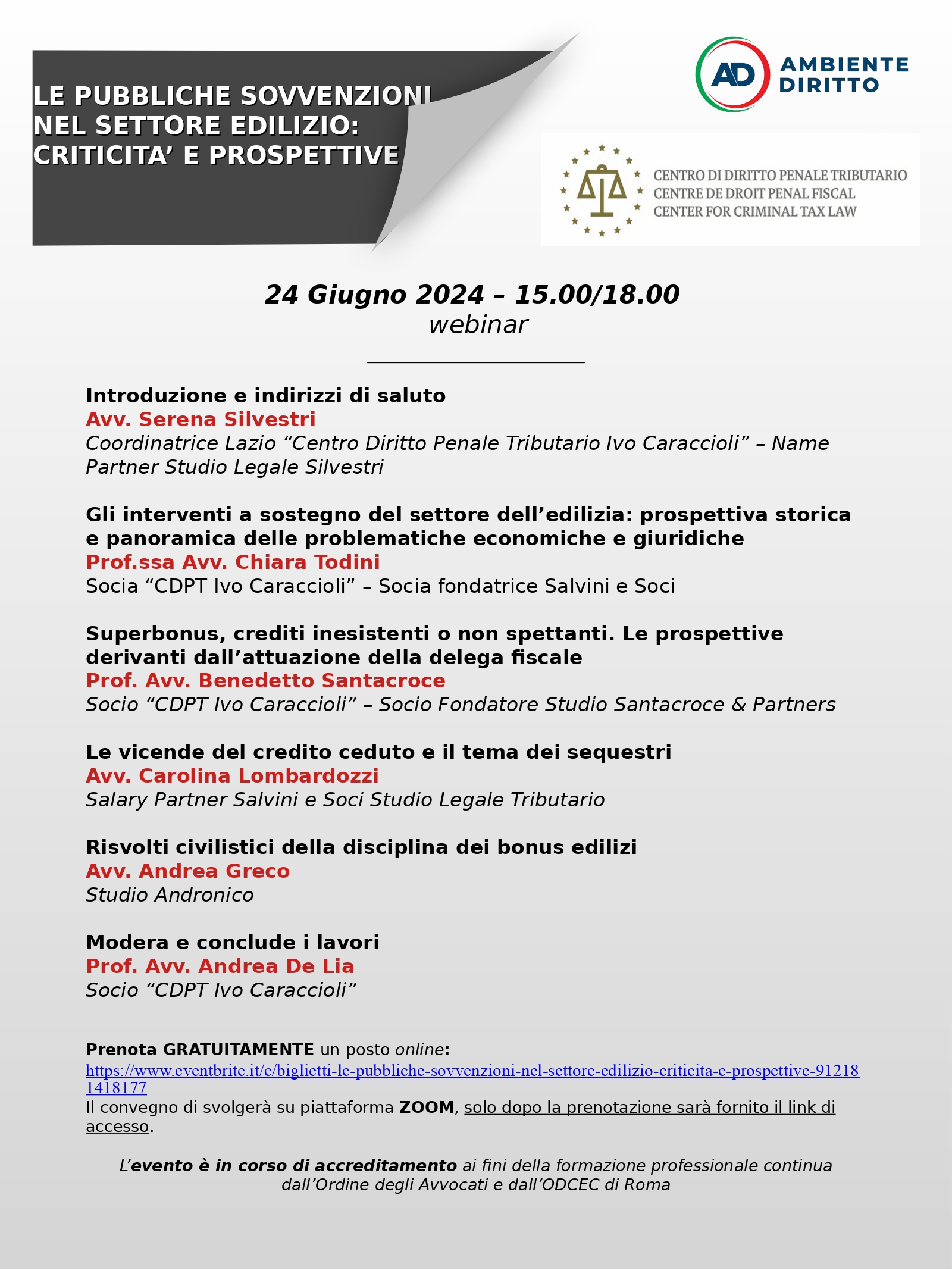L’esclusione delle tutele per il whistleblower.
______________ AMBIENTEDIRITTO ______________
LE DISPOSIZIONI A TUTELA DEL PUBBLICO DIPENDENTE CHE SEGNALA ILLECITI (WHISTLEBLOWER) E IL DIFFICILE BILANCIAMENTO CON IL DIRITTO DI ACCESSO DEL LAVORATORE INCOLPATO NEL SISTEMA DISCIPLINARE.
L’esclusione delle tutele per il whistleblower.
Gaetano Labianca
Abstract
L’istituto del whistleblowing (letteralmente, “soffiare nel fischietto”) sta ad indicare la segnalazione, da parte di un soggetto intraneo ad una Pubblica amministrazione o ad un ente privato, di condotte illegali o di comportamenti impropri, financo immorali, commessi da soggetti appartenenti all’ente. Tramite il whistleblowing, la vigilanza di coloro che rappresentano la P.A. e i dipendenti privati è affidata non più solamente agli arbitri, ma agli stessi “giocatori” della partita, per sanzionare un comportamento gravemente scorretto degli altri partecipanti. Presentato come un nuovo modo di intendere la P.A., sulla falsariga del modello anglosassone da cui mutua l’origine, l’introduzione del whistleblowing nel nostro ordinamento interno ha l’ambizione di rivoluzionare il tradizionale senso di isolamento, se non di vera e propria avversione, che nella maggioranza dei casi ha sinora subito colui che “riveli” condotte illecite (c.d. seriuous malpractices o wrongdoings) del proprio datore di lavoro o dei suoi colleghi. Il Legislatore italiano, sulla scia delle esperienze degli altri Paesi, si è posto allora il problema di come tutelare il whistleblower (il c.d. “segnalatore”, o “fischiettatore”) da eventuali condotte discriminatorie o ritorsive (c.d. condotte di “retaliation”). Allo stato, la tutela del whistleblower viene garantita tramite un duplice binario di tutele: da un lato, impedendo la divulgazione delle sue generalità e, dall’altro, contrastando eventuali misure ritorsive a suo danno. L’istituto presenta vocazione inter-disciplinare; in questa sede, dopo una ampia premessa sulla genesi dell’istituto, si analizzeranno in particolare i controversi temi del bilanciamento tra l’interesse alla riservatezza del soggetto segnalante e il diritto di accesso del soggetto segnalato nel sistema disciplinare, nonché quello della esclusione delle tutele per il whistleblower.
The institution of whistleblowing (literally, “blowing the whistle”) indicates the reporting, by an intraneous subject to a public administration or a private body, of illegal conduct or improper behavior, even immoral, committed by subjects belonging to the institution. Through whistleblowing, the supervision of those who represent the P.A. and private employees is no longer entrusted only to the referees, but to the “players” of the match themselves, to sanction a grossly incorrect behavior of the other participants. Presented as a new way of understanding the PA, along the lines of the Anglo-Saxon model from which it takes its origin, the introduction of whistleblowing in our internal system has the ambition to revolutionize the traditional sense of isolation, if not real aversion, which in the majority of cases has so far suffered the one who “reveals” illicit conduct (so-called serious malpractices or wrongdoings) of his employer or his colleagues. The Italian legislator, in the wake of the experiences of other countries, then raised the problem of how to protect the whistleblower (the so-called “whistleblower”) from any discriminatory or retaliatory conduct (so-called “retaliation”). At present, the protection of the whistleblower is guaranteed through a double track of safeguards: on the one hand, by preventing the disclosure of his personal details and, on the other, by countering any retaliatory measures to his detriment. The institute has an inter-disciplinary vocation; here, after a broad introduction on the genesis of the institute, we will analyze in particular the controversial issues of the balance between the interest in the confidentiality of the reporting subject and the right of access of the subject reported in the disciplinary system, as well as that of the exclusion of protections for the whistleblower.
SOMMARIO: 1.- L’introduzione della tutela del whistleblowing: la legge n. 190/2012 (c.d. Legge “Severino”). 2.- La legge n. 179/2017 (“disposizioni per la tutela degli autori di segnalazioni di reati o irregolarità di cu siano venuti a conoscenza nell’ambito di un rapporto di lavoro pubblico o privato”). 3.- L’obbligo della riservatezza e il diritto di accesso del lavoratore segnalato nel sistema disciplinare. 4.- Il concetto di interesse pubblico e la “giusta” causa di rivelazione di notizie coperte da segreto. 5.- L’esclusione delle tutele per il whistleblower.
Scarica allegato





 AMBIENTEDIRITTO.IT EDITORE
AMBIENTEDIRITTO.IT EDITORE